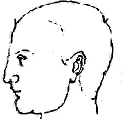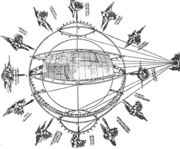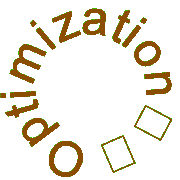Scientist+User
The distance between the Real-World / RW and its representation is bridged by the relevant process developed in the course of the evolution of Civilisation. The driver of this process is the Scientist who tries to describe the RW by an approximation, the [Real-World] / [RW] best-fitted as possible to the RW, by observing, thinking, measuring, formulating and comparing. The result of the comparison is the representation of the approximated [RW] by the procedure of mapping. So why mapping is a foundamental endeavour in the effort of humanity to approach the RW. The representation, in other words the map, is then used by the User for a reconstruction of his own {RW}. The better is the representation the better could be the reconstruction, depending yet upon the preparation of the User to read properly the representation
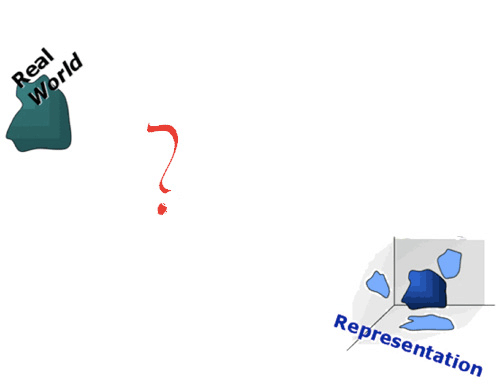 How the real World is represented? Animation EL
How the real World is represented? Animation EL
 The Scientist stands between the Real-Word/RW and its (visual) representation
The Scientist stands between the Real-Word/RW and its (visual) representation
Scientist's construction
Scientists endeavour to describe RW since the ancient times, observing and developing models suitable for this description
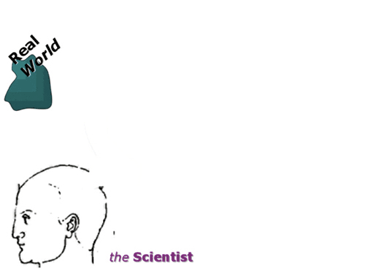
In mapping sciences and technologies (including geodesy and cartography) the Scientist is one who (1) observes carefully the RW, e.g. the Earth, perceiving what observes according to his preparation and experience constructing thus a perceptible world, the [RW]
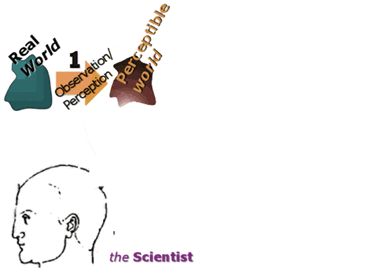
Then through his thinking and scientific knowledge (2) he develops a conceivable world which is nothing but a mathematical model [RW], of RW, as perceived by observation
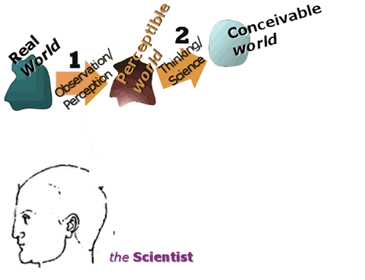
Measurements and available technology (3) lead to a metrical world, which is compared interactively with the conceivable world, according to specific formulation (4)
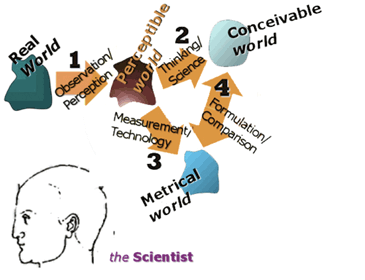
The circuit of the perceptible, conceivable and metrical worlds is continuously optimised (Opt) providing better and better [RW] approximations
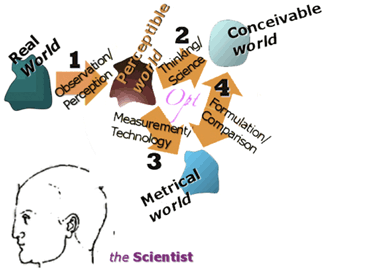
The optimisation process, updates and improves the quality of the next step (5), the mapping, a derivative of this optimised process

Final step is the representation of the [RW] best-fitted (Opt: optimisation) to RW using the available relevant sciences and technologies, under assumptions and choises (6) which regulate the final outcome of the representation
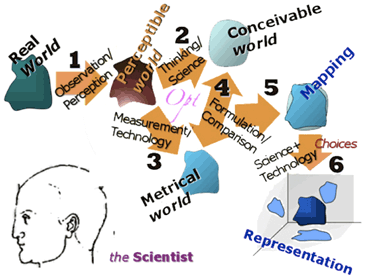
The ensamble of steps and processes (1), (2), (3), (4), (5) and (6) is the consistent concern of the Scientist constructing at the end the representation for the benefit of the User

The Scientist constructs the [RW], i.e. the optimal approximation to the RW and its proper representation for the User
Summary
 Animation EL
Animation EL
The scheme presented here finds its root in the Ancient Greek scientific thinking associating the observations with the measurements, the development of models (e.g. the sphere as the model of the Earth), the improvement of the models to fit best the measurements (e.g. the size of the spherical model by Eratosthenes) and finally the representation (cf. Ptolemy; Ptolemy+). The culmination of this scientific reasoning and practice founds fertile grounds from the Renaissance to the 17th, 18th and 19th cent, offering the standards of our modern and contemporary thinking, especially when focusing on Earth Observation and Mapping
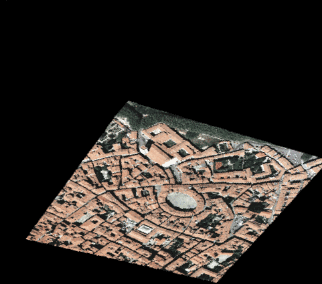 |
The airborne sensor for Earth Observation (aerial imagery/photogrammetry) - Animation EL |
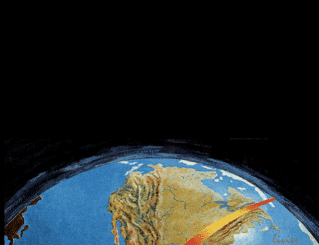 |
The spaceborne sensor for Earth Obsrvation (satellite imagery/remote sensing) - Animation EL |
User's reconstruction
The User reconstructs then his own {RW} due to the available representation. The quality and the reliability of the representation, derived from the process described above, regulates the quality and the reliability of the reconstructed world by the User, provided her/his proper preparation and experience for this reconstruction!
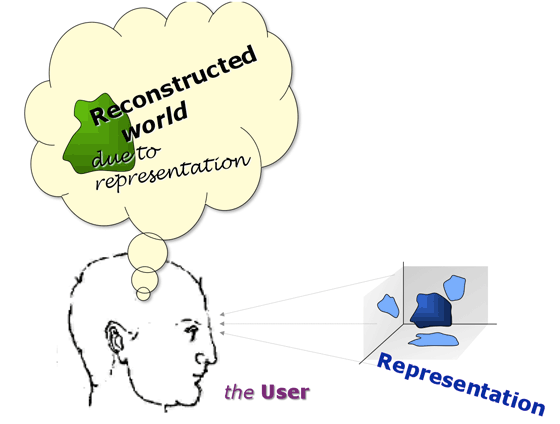 The User and the representation of the [RW]. The quality of the reconstruction depends on the preparation of the User to read the representation
The User and the representation of the [RW]. The quality of the reconstruction depends on the preparation of the User to read the representation
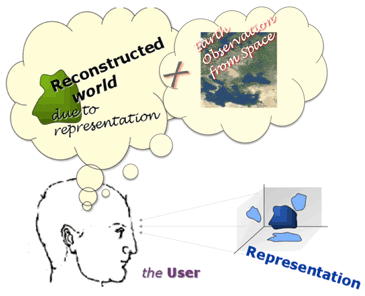
The results are more effective if associated with additional imputs as are e.g. the images captured from space orbiting sensors
User in Middle Ages
A special User, in this context, which deserves mentioning is the one coming from the Middle Ages. Of course this medieval user is associated with the corresponding "scientist" of his period, who is conventionally called here as the "medieval scientist(?)"
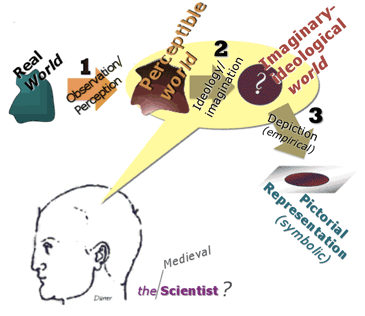
The medieval scientist(?) or, better, the medieval expert develops his perceptible world which is then tranformed into an imaginary/ideological world, with little interest for resemblance with the RW or even with a [RW] in the almost total absence of the use of measurements. The pictorial representation of this ideological world is an empirical result mainly symbolic rather than realistic
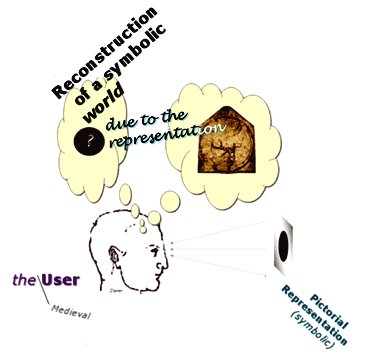
The medieval user reconstructs thus, a symbolic world which comes out from the relevant depictions, dominant in the Middle Ages, like e.g. the well known OT (Orbis Terrarum) medieval representations

